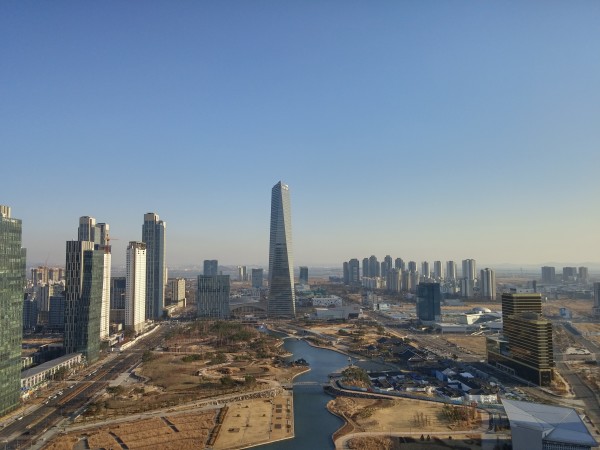Defining a Smart City
A ‘smart city’ is an urban region that is highly advanced in terms of overall infrastructure, sustainable real estate, communications and market viability. It is a high-tech intensive and advanced city that connects people, information and city elements using new technologies in order to create a sustainable, greener city, competitive and innovative commerce, and an increased life quality.
Origins of the Smart City
Smart Cities have been to an extent existed since the days of urban town planning, and cities such as Singapore and LA to name a few can be branded as Smart cities. However, the high tech definition of smart cities as stated above has its origins around a decade back.
In 2005, Bill Clinton through his charity, the Clinton Foundation – challenged network equipment maker Cisco to use its technical know-how to make cities more sustainable. As a result, Cisco dedicated $25 million over five years to research the topic, spawning what it called the Connected Urban Development program. This involved working with the cities of San Francisco, Amsterdam and Seoul on pilot projects to prove the technology’s potential. In 2010, when Cisco’s pledge to the Clinton Foundation expired, it launched its Smart and Connected Communities division in order to commercialize the products and services that it had developed during the program.
In 2008, IBM launched its Smarter Planet initiative, a broad program to investigate the application of “instrumentation, interconnectedness and intelligence” (i.e. sensors, networks and analytics) to some of the world’s most pressing issues. The following year, IBM’s Smarter Cities program focused on using that combination of technologies in an urban setting.
Both CISCO and IBM have many such pilot projects running in cities such as Rio,and Seoul , and will typically partner with engineering firms, telecommunications operators or facilities management companies – and in some cases each other – to deliver a complete service.
Attributes of a Smart City
There are 6 Pillars of a Smart City: – Smart Economy, Smart Mobility, Smart People, Smart Living and Smart Governance.
- Smart Economy – focuses on factors such as the stimulation of innovation, entrepreneurship, productivity and international appeal.
- Smart mobility – Mobility and transport are essential if a city is to function properly. A smart city should be easily accessible to visitors and residents, and travel across the city should be problem-free. The aim is to provide a multifaceted, efficient, safe and comfortable transport system, which is linked through an extensive infrastructure.
- Smart Environment – in a Smart City , the digital technology is in sync with environmental friendly practices, which are harnessed to create smart, sustainable cities with high-quality living. Key Environmental aspects such as green buildings, green energy, and green urban planning are incorporated into the planning aspects.
- Smart People – The success of a smart city would depend upon technologically and environmentally aware citizens, who are willing to participate and engage in the smart city
- Smart Living – Smart cities are focused on being a desirable place to live, work and also spend time in. Concerns that influence the quality of life in the region include culture, health, safety and tourist attraction. Key questions include how to ensure the city remains livable for children and how to effectively address people living independently for longer.
- Smart Governance – a transparent and accountable form of e-governance is what concisely describes the smart governance that is needed in the smart cities.
Smart Cities – how does it look like?
Let’s look inside a model Smart City, to see what one should expect a typical smart city wave to bring along, for our experience.
Songdo, South Korea has been billed as the world’s first “Smart City.” Its Key Features are:-
- Greenery – 40% of the city has been allocated for open green space. Songdo’s Central Park, which opened in 2009, sits on 4.2 million square feet and contains a museum, ecotarium and water taxi service.
- Lighting – The city houses dozens of LEED-certified buildings
- Waste Disposal – It has designed a pneumatic waste disposal system that uses pipes to suck trash from individual homes into processing centers that automatically sort the material and recycle it. In the future, the city plans to turn that waste into renewable energy.
- Sensors – Underneath Songdo’s streets, sensors detect traffic conditions and alter signals based on congestion. At street level, bikes pass by on Songdo’s 15 miles of bike lanes, and cars are fitted with radio identification tags to report gridlock. Elsewhere, sensors monitor salt water flow in Central Park.
- Digital Presence – Nearly all aspects of life are digitally networked, from sensors that help control traffic and public transportation schedules, to Cisco Tele-Presence-based personal video services linking residents to businesses and service providers, to the centralized control systems that manage city services like waste disposal and energy generation
On conclusion, Smart Cities will not be limited to an “elite few” in the coming years. All cities and towns will have certain elements of Smart cities, and it is how we adopt and use it – and how conscious we become of one another that will drive the extent of Smartness in the cities.
At the end of it all – it is about the people not technology!


Leave a reply